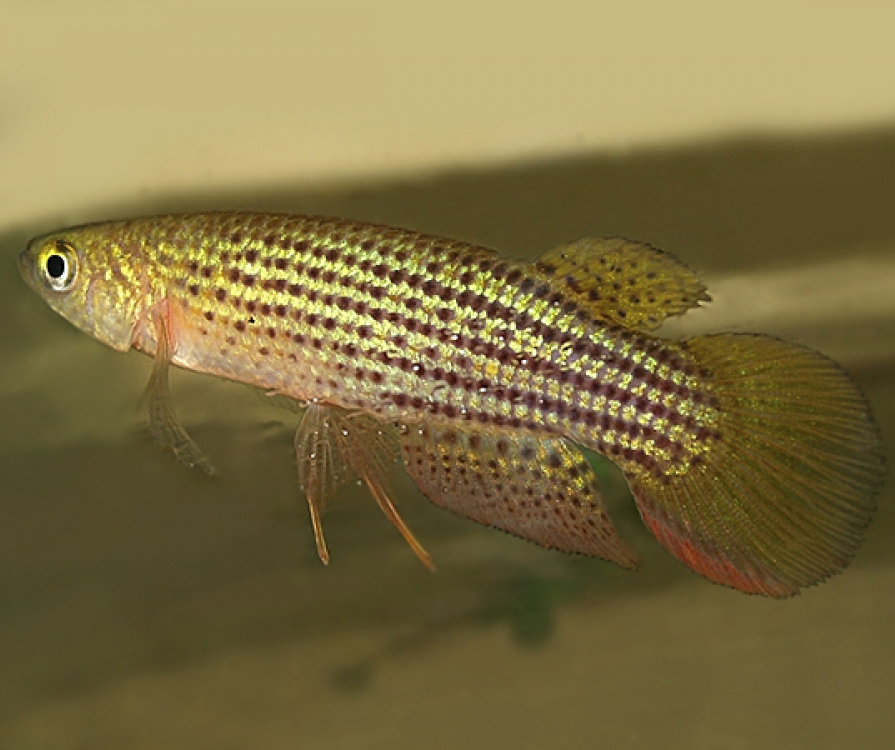Annuelle Killifish from South America
Table of contents
- Seasonal killifish from South America
- Breeding killifish from South America
- An (incomplete) list of killifishes for the aquarium from South America
General information on keeping and breeding Killifishes can be found in our blog "Keeping and breeding Killifishes in the aquarium". This article is specifically about the annual egg-laying toothcarps from South America.
Seasonal killifish from South America
Some South American killifishes are not very well known in the aquarium hobby and are therefore absolute rarities. In their native country, these colourful jewels inhabit waters that regularly dry up as seasonal fish. The reproductive strategy of the annelid fish is optimally adapted to these temporary habitats. Even in the aquarium, they only live for a maximum of 1 to 2 years.
Most South American killies like fairly soft to medium-hard water that is rich in humic substances. Unsuitable water values can lead to stress, reduced reproduction and diseases.
Most South American killies can be kept in pairs or in a harem, i.e. in a small shoal of 3-5 animals with a surplus of females. If there is more than one male, you need to structure the aquarium especially well with roots and stones as well as plants so that the potential rivals can avoid each other.
You can also run the aquarium for South American killies without a filter - most species prefer an extremely weak or no current. Regular water changes are then of course even more important than they already are.
We recommend keeping South American killifishes in a species tank, possibly together with shrimps or snails. Anything else is not advisable due to their special reproductive method, their relatively short life span and the different habitat variations of the pretty killifishes.
The aquarium for South American killifish must be well covered because most species are extremely fond of jumping.
The diet of South American killifishes is predominantly carnivorous - they love live food and can also be accustomed to frozen food over time. Some of the seasonal killifish from South America can also be coaxed into a high-quality granulate for predominantly carnivorous fish (such as our NatureHolic Bettafeed) as a supplementary food.
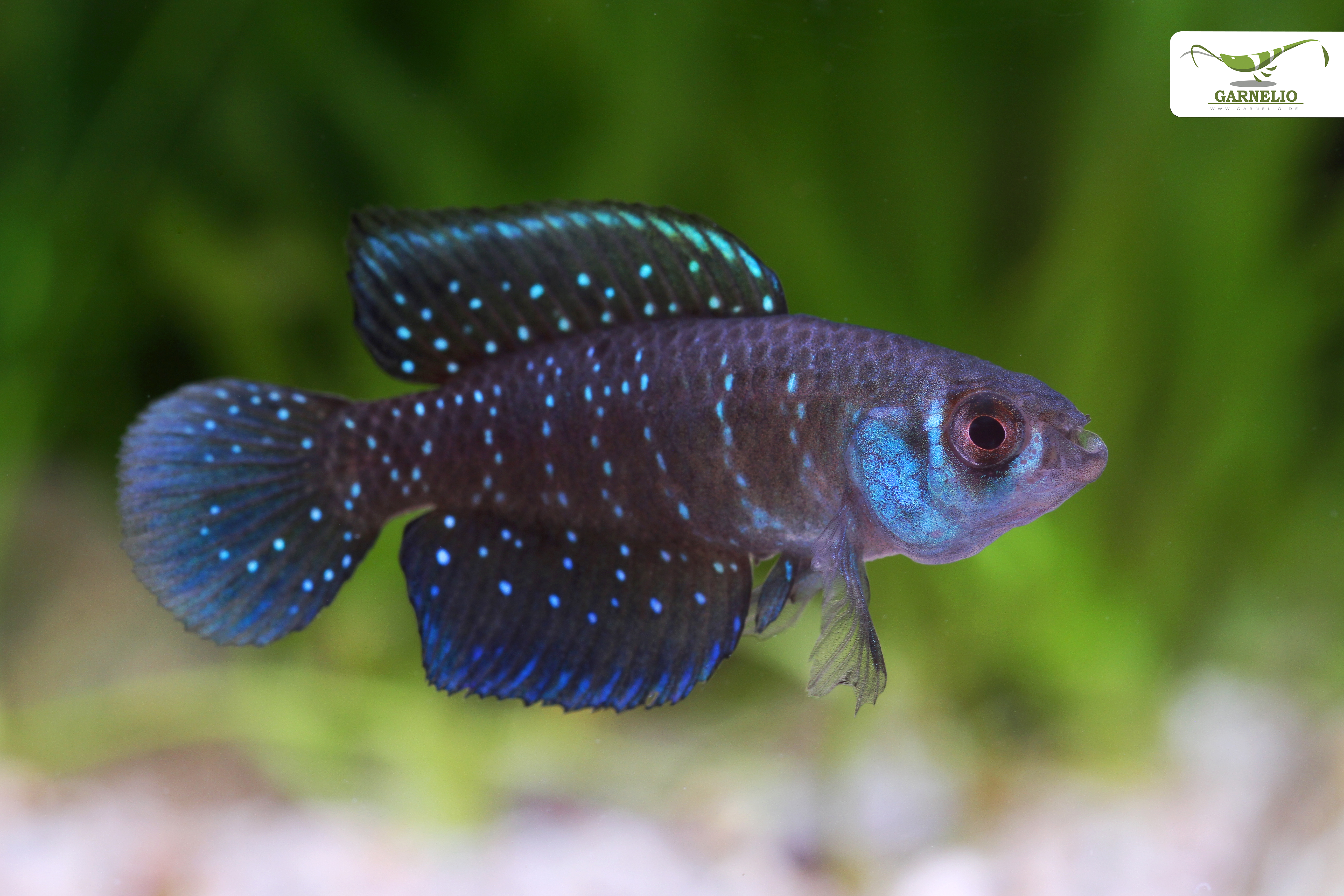
Breeding killies from South America
The name "annual ornamental fish" comes from the Latin word annus for year. The South Americans among the egg-laying toothcarps are seasonal fish. They do not live very long because their home waters sometimes dry out during the year. Most South American killies are relatively easy to breed. Their eggs depend on an appropriate dry period for maturation.
An aquarium of 60 litres is sufficient for a group of South American killies because they are usually quite small species. The tank can be planted a little. A filter is not necessary, but then the regular larger water changes should be followed very conscientiously.
The South American killifish species commonly found in aquariums are also called bottom ploughers or bottom spawners. They prefer to lay their spawn in peat fibres in the aquarium. For this purpose, it is best to use unfertilised fibrous peat, which you can either place in a deep bowl or immediately on the entire bottom surface of the killifish breeding aquarium. Most egg-laying toothcarps from South America are permanent spawners.
Important: The eggs of the South American annelid killifish must be drained for some time so that they can develop. If they remain in the water, the spawn will die after a few weeks.
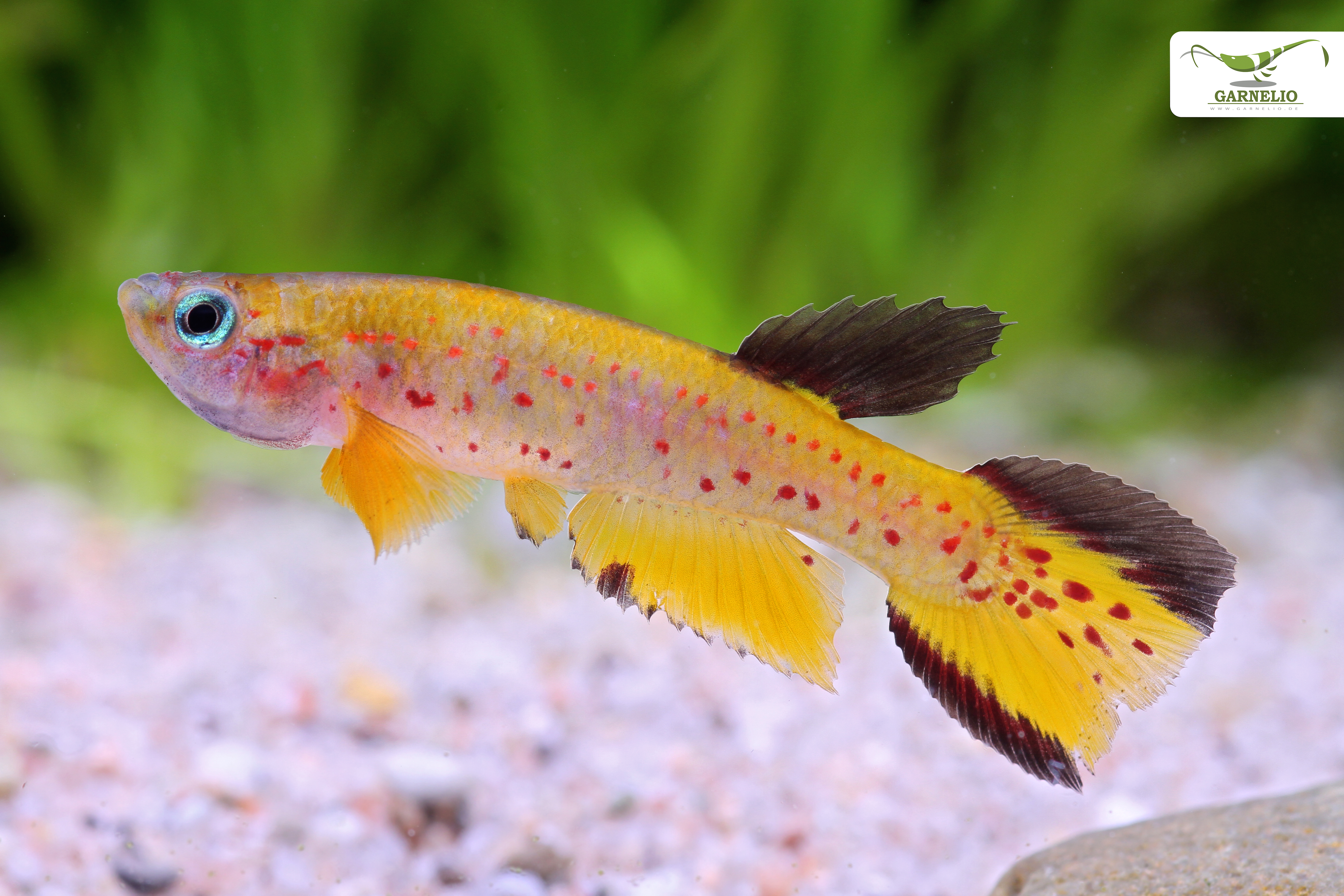
Breeding preparation, drying phase and rearing
The breeding group in the aquarium is fed with high-quality live food to condition them and make them ready to spawn. Larger water changes with softer and slightly cooler fresh water also stimulate the spawning desire. This is soon followed by courtship.
When the breeding pairs have spawned, remove the peat from the aquarium. First let the spawning substrate drip off in a fine sieve. Then spread the peat out on a newspaper and let it dry superficially. However, the peat fibres should remain slightly moist. Egg granules can be discovered in the loose, tobacco-moist peat - but peat beds in which you feel you cannot discover any spawn have often caused surprises because fish larvae hatched after the drying phase. You have nothing to lose by trying!
Put the tobacco-moistened peat mixture into a plastic box with a tight-fitting lid so that the substrate stays moist. It is best to label the box with the name of the species, especially if you keep and want to breed several species of killifish from South America.
The drying phase (diapause) for the peat build-up of South American killies is different for each species. It is important to keep to this time.
When you can clearly see the eyes of the fry in the eggs, the peat is ready to be poured on.
To get the fish larvae to hatch, take the peat mixture out of the tin and spread the peat fibres out in a shallow dish. Then pour about 15 to 20 °C warm water over it. The water should be about 5 to 10 cm above the base. After a short time, the fry will hatch and you can transfer them to a rearing aquarium with suitable water values and feed them Artemia nauplii.
Professional tip: The yield of young killifish can be increased quite easily - not all eggs hatch at once. With this mechanism, the killies in their temporary waters ensure that the next generation does not die out if the water dries out again before the young fish are sexually mature and have been able to lay eggs. Therefore, you can let the peat dry out again after pouring it on and then pour it on again after waiting a few weeks. As a rule, a further number of fry will then hatch. You can use this method several times until nothing more hatches.
You can easily send the peat mats with the Killifish eggs by parcel and thus pass on these pretty little fish super-easily.
Conditioning
In order to get your Killifish breeding pairs and breeding groups in a good spawning mood and to improve the spawning quality of the female egg-laying toothcarps, you should condition your fish before setting them up for a breeding attempt. For this purpose, it is a good idea to use high-quality live food. Good choices are live black mosquito larvae, tubifex and grindal worms. To make the live food even better, give the worms and larvae some chlorella or spirulina for one or two days before feeding. Artemia or water fleas, also fed with high-quality dust food, chlorella or spirulina, provide additional astaxathin, proteins and important dietary fibres and can thus complement the relatively fat-containing worms.
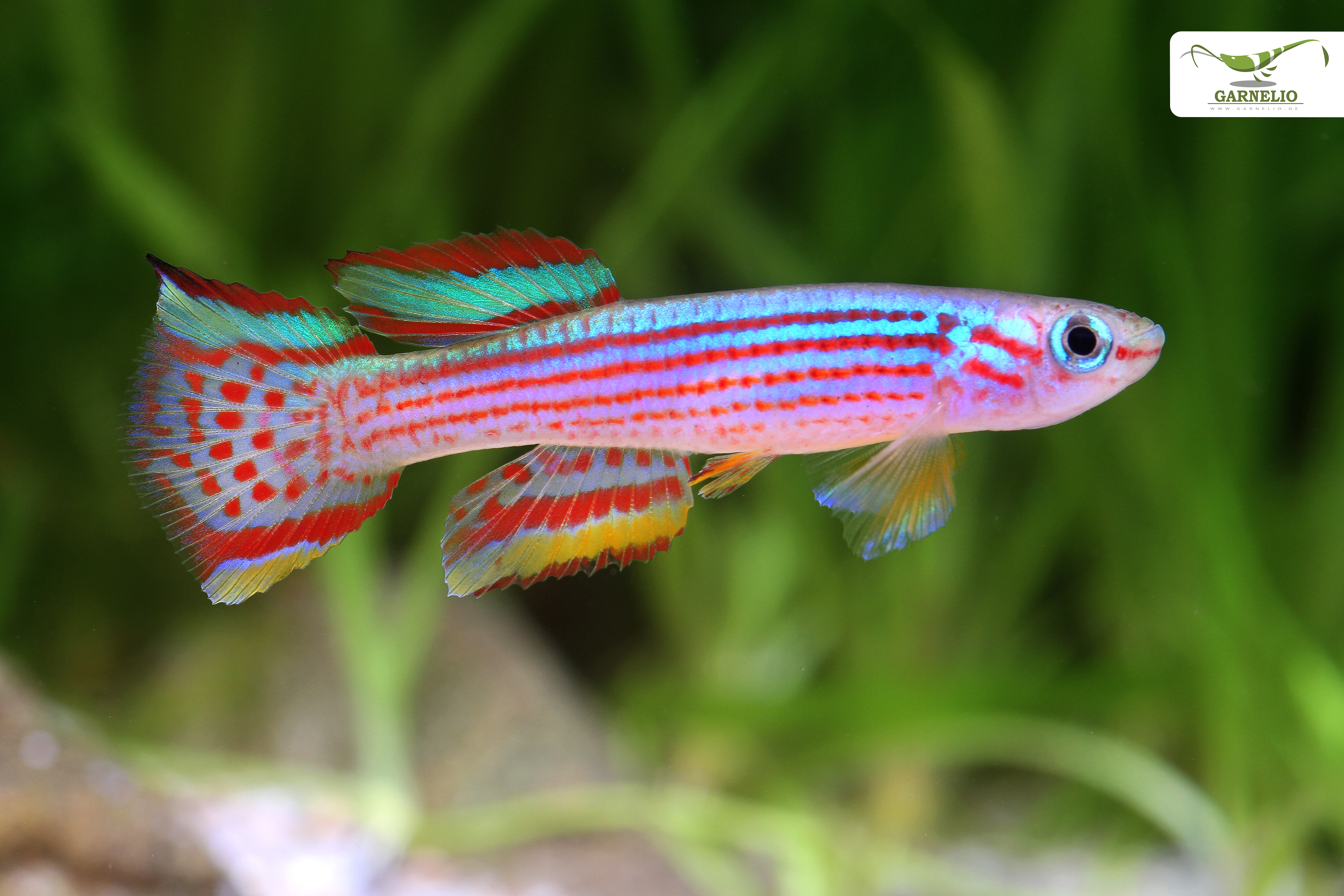
An (incomplete) list of killifishes for the aquarium from South America
Among the South American killifishes there are easier and less easy to keep species. Below you will find a long, but by no means complete list of the most beautiful egg-laying toothcarps from South America that you can keep in the aquarium.
The genus Simpsonichthys
Simpsonichthys (Cynolebias) bokermanni - Bokermann's killifish, Pink fanfish: Bokermann's killi is relatively easy to keep in the aquarium. The fanfish has its home in the catchment area of the Rio Cachoeira in the south of Brazil. The males grow up to 6.5 cm, while the female Bokermann's Killies remain a little smaller.
Recommended water values: GH 6 to 9, KH up to 3, pH 6 to 7, temperature 22 to 28 °C
Recommended aquarium size: from 60 cm edge length
Drying time for peat build-up: 8 to 12 weeks
Recommended group size in the aquarium: pair keeping or at least 3 animals with excess females
Simpsonichthys spec. "Urucuia" - Urucuia killifish: This still undetermined killifish from the area around Urucuia in the state of Minas Gerais in Brazil is a pretty fanfish that does not grow too large.
Recommended water values: GH 6 to 9, KH up to 3, pH 6 to 7, temperature 22 to 28 °C
Recommended aquarium size: from 60 cm edge length
Drying time for peat preparation: 8 to 12 weeks
Recommended group size in the aquarium: pairs or at least 3 animals with excess females
Simpsonichthys (Cynolebias) boitonei - Boitons Killifish, Lyra Pearlfish: Boitons Killifish grow to about 6 cm. The pearlfish with the lyra tail originates from the upper catchment area of the Rio Paraná in Brazil.
Recommended water values: GH up to 6, KH up to 3, pH 6 to 6.5, temperature 20 to 24 °C
Recommended aquarium size: from 60 cm edge length
Drying time for peat: 8 to 10 weeks
Recommended group size in the aquarium: pairs or at least 3 animals with a surplus of females.
The genus Hypsolebias
Hypsolebias (Simpsonichthys) adornatus - Schmuckkärpfling: The Schmuckkärpfling from the catchment area of the Rio Sao Francisco and the Rio Paraná in north-eastern and central Brazil has been reassigned to the genus Hypsolebias, after it had long been listed as Simpsonichthys. The males grow up to 4 cm long, the females remain a little smaller.
Recommended water values: GH 6 to 9, KH up to 3, pH 6 to 7, temperature 18 to 25 °C
Recommended aquarium size: from 60 cm edge length
Drying time for peat build-up: 8 to 12 weeks
Recommended group size in the aquarium: pairs or at least 3 animals with excess females
Hypsolebias (Simpsonichthys) fulminantis - Magnificent Fanfish "Guanambi": This local form of the Magnificent Killifish comes from the area of the city of Guanambi in the south of Brazil. The males grow up to 5 cm long, the females remain somewhat smaller.
Recommended water values: GH 6 to 9, KH up to 3, pH 6 to 7, temperature 22 to 24 °C
Recommended aquarium size: from 60 cm edge length
Drying time for peat build-up: 8 to 12 weeks
Recommended group size in the aquarium: Keep in pairs or at least 3 animals with excess females.
Hypsolebias (Simpsonichthys) hellneri - Hellner's killifish: Hellner's killifish comes from the Brazilian state of Minas Gerais. The males grow up to 6 cm long, the females grow up to about 5 cm.
Recommended water values: GH 6 to 12, KH up to 5, pH 6 to 7.5, temperature 24 to 27 °C
Recommended aquarium size: from 60 cm edge length
Drying time for peat preparation: 5 to 6 months
Recommended group size in the aquarium: pairs or at least 3 animals with excess females
Hypsolebias (Simpsonichthys) magnificus - Magnificent Toothfish: The Magnificent Killifish originates from the middle catchment area of the Rio Sao Francisco in the northeast of Brazil. The males grow up to 5 cm long, while the females are not quite as large.
Recommended water values: GH 6 to 12, KH up to 5, pH 6 to 7.5, temperature 22 to 26 °C
Recommended aquarium size: from 60 cm edge length
Drying time for peat preparation: about 5 months
Recommended group size in the aquarium: pairs or at least 3 animals with a surplus of females.
Hypsolebias (Simpsonichthys) picturatus - Painted Killifish: The particularly beautifully marked Painted Killifish originates from the catchment area of the Rio Sao Francisco in the northeast of Brazil. The males reach a total length of up to 4.5 cm, the females only grow to about 4 cm.
Recommended water values: GH 6 to 12, KH up to 5, pH 6 to 7.5, temperature 22 to 26 °C
Recommended aquarium size: from 60 cm edge length
Drying time for peat preparation: about 5 months
Recommended group size in the aquarium: pairs or at least 3 animals with excess females.
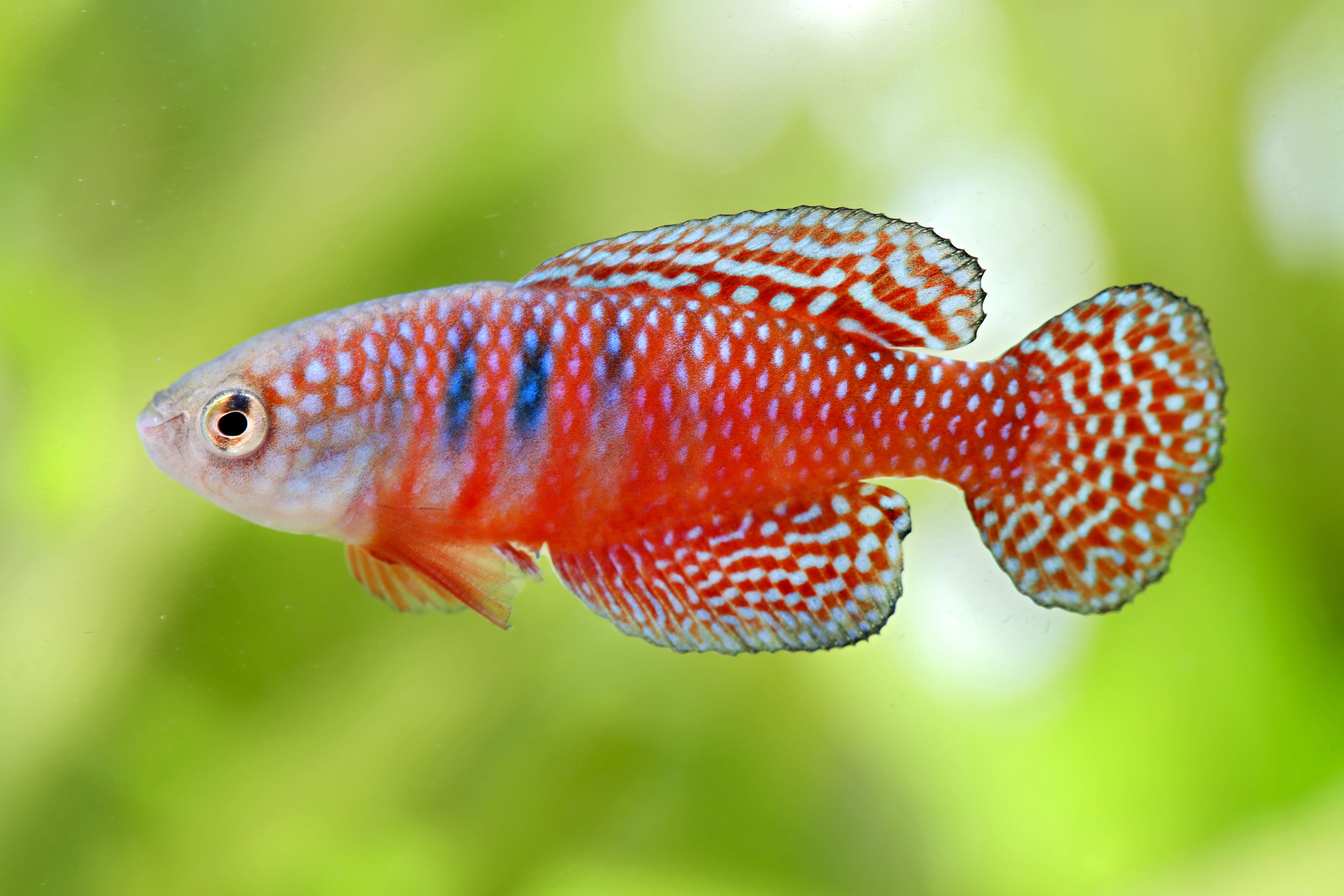
Hypsolebias (Simpsonichthys) carlettoi - Carletto's killifish: Carletto's killi is relatively easy to keep in the aquarium. The Killi, which remains small, has its home in Brazil. The males grow to 4 to 5 cm, the females, on the other hand, do not grow quite as big.
Recommended water values: GH 6 to 9, KH up to 3, pH 6 to 7, temperature 22 to 28 °C
Recommended aquarium size: from 60 cm edge length
Drying time for peat preparation: 8 to 12 weeks
Recommended group size in the aquarium: pairs or at least 3 animals with a surplus of females.
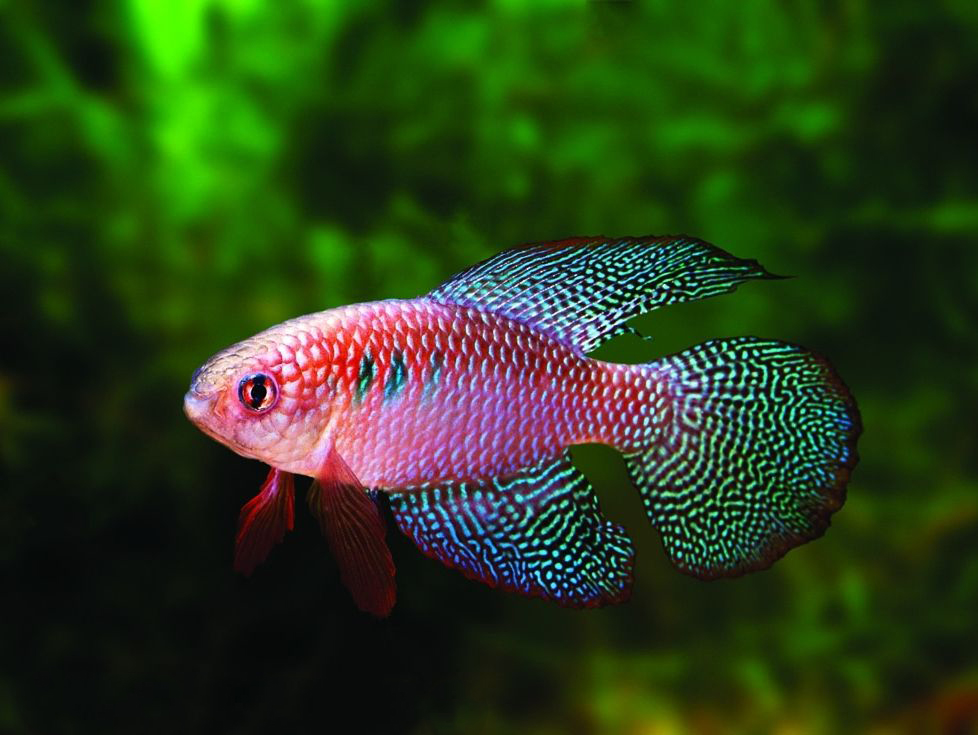
The genus Spectrolebias
Spectrolebias (Simpsonichthys) reticulatus - Large-finned killifish: The large-finned killifish from the catchment area of the Rio Xingu in Brazil remains particularly small with a body length of only 2 cm. The females even grow to a length of only 1.7 cm.
Recommended water values: GH 5 to 8, KH up to 3, pH 6.5 to 7, temperature 18 to 23 °C
Recommended aquarium size: from 30 cm edge length
Drying time for peat: up to 3 months
Recommended group size in the aquarium: pairs or at least 3 animals with a surplus of females.
The genus Xenurolebias
Xenurolebias (Simpsonichthys) myersi - Myers Fanfish: Myers Fanfish can also be found under the synonyms Simpsonichthys myersi and Cynolebias myersi. This egg-laying toothcarp lives in seasonal pools and floodplains along the Atlantic coast of Brazil and grows to about 6 cm long.
Recommended water values: GH 6 to 10, KH up to 5, pH 6 to 6.8, temperature 23 to 28 °C
Recommended aquarium size: from 60 cm edge length
Drying time for peat build-up: 8 to 10 weeks
Recommended group size in the aquarium: pairs or at least 3 animals with excess females
The genus Rachovia
Rachovia hummelincki - Hummelincks Killifish "COL 2006-02": This local form of Hummelincks Killifish from the Paraguana Peninsula in northern Venezuela. Hummelinck's Egg-laying Toothcarp grows to about 5 cm in length.
Recommended water values: GH 6 to 10, KH up to 3, pH 6 to 7, temperature 22 to 26 °C
Recommended aquarium size: from 60 cm edge length
Drying time for peat build-up: up to 4 months
Recommended group size in the aquarium: pairs or at least 3 animals with excess females
Rachovia pyropunctata - Firepoint Killifish: The Firepoint Killifish from the Paraguana Peninsula in northern Venezuela. Hummelinck's Egg-laying Toothcarp grows to a length of about 5 cm.
Recommended water values: GH 6 to 10, KH to 3, pH 6 to 7, temperature 22 to 28 °C
Recommended aquarium size: from 60 cm edge length
Drying time for peat build-up: up to 4 months
Recommended group size in the aquarium: pair keeping or at least 3 animals with excess females
The genus Austrofundulus
Austrofundulus leohoignei - Leo Hoigne's killifish: Named after its discoverer Leo Hoigne, this killifish from the Rio Adroa catchment area in Venezuela grows to about 7 cm in length. The females grow to only 3-4 cm. The genus Austrofundulus is very closely related to Rachovia and could be merged with it in the future.
Recommended water values: GH 6 to 10, KH up to 3, pH 6 to 7, temperature 22 to 28 °C
Recommended aquarium size: from 60 cm edge length
Drying time for peat preparation: up to 4 months
Recommended group size in the aquarium: pair keeping or at least 3 animals with excess females
The genus Pterolebias
Pterolebias longipinnis - Long-finned Veil Carp: The Long-finned Veil Carp is a fairly easy to keep killifish from the catchment area of the Rio Paraguay and the Amazon and grows to about 12 cm in length - the females remain under this length.
Recommended water values: GH 5 to 8, KH up to 3, pH 6.5 to 7, temperature 17 to 22 °C
Recommended aquarium size: from 80 cm edge length
Drying time for the peat mixture: up to 3 months
Recommended group size in the aquarium: pair keeping or at least 3 animals with excess females
Pterolebias zonatus - Striped Killifish: The Striped Killifish is found in the catchment area of the Rio Orinoco in temporary open waters with good sunlight in Venezuela. The killifish grows up to 10 cm long, although the females do not grow as large as the males.
Recommended water values: GH 5 to 8, KH up to 3, pH 6.5 to 7, temperature 18 to 23 °C
Recommended aquarium size: from 80 cm edge length
Drying time for peat build-up: up to 3 months
Recommended group size in the aquarium: pairs or at least 3 animals with excess females
The genus Aphyolebias
Aphyolebias peruensis - Peruvian Fanfish: The Peruvian Fanfish from the Amazon basin grows up to 10 cm long, although the females do not grow as large as the males.
Recommended water values: GH 5 to 12, KH up to 6, pH 6 to 8, temperature 27 to 30 °C
Recommended aquarium size: from 80 cm edge length
Drying time for peat: up to 3 months
Recommended group size in the aquarium: pairs or at least 3 animals with excess females.
The genus Terranatos
Terranatos dolichopterus - Wingfin, Sabrefin, Sailfin Killifish: The striking fin shape has given the Sabrefin its name. The sailfin killifish from the inlet of the Orinoco in Venezuela reaches a total length of up to 4 cm.
Recommended water values: GH 4 to 6, KH up to 3, pH 6 to 6.5, temperature 20 to 25 °C
Recommended aquarium size: from 60 cm edge length
Drying time for peat build-up: 4 to 5 months
Recommended group size in the aquarium: pair keeping or at least 3 animals with excess females
The genus Austrolebias
Austrolebias alexandri "Camino accesso" - Alexander's fanfish: The Alexander's fanfish, which is quite easy to keep in the aquarium, comes from the Rio Uruguay inlet in Argentina, Brazil and Uruguay. The local variety "Camino accesso" is characterised by its special body colouration. The killifish reaches a total length of up to 9 cm, but usually the fish remain somewhat smaller with a total length of about 5 cm. Also, the females do not grow as large as the males.
Recommended water values: GH 5 to 8, KH up to 3, pH 6.5 to 7, temperature 22 to 28 °C
Recommended aquarium size: from 60 cm edge length
Drying time for peat build-up: 2 to 3 months
Recommended group size in the aquarium: pairs or at least 3 animals with excess females
Austrolebias nigripinnis - Black-finned Fanfish, Black-finned Pearlfish: The Black-finned Fanfish is an easy-to-keep aquarium fish and originates from the catchment area of the Lower Rio Paraná and the Rio Uruguay. The blackfin pearlfish can reach a maximum length of 7 cm, but usually the annual ornamental fish remain somewhat smaller at about 4.5 cm in length. The females grow to a smaller total length than the males.
Recommended water values: GH 5 to 12, KH to 5, pH 6 to 7, temperature 18 to 22 °C
Recommended aquarium size: from 60 cm edge length
Drying time for peat preparation: 2 to 4 months
Recommended group size in the aquarium: Keep in pairs or at least 3 animals with a surplus of females.
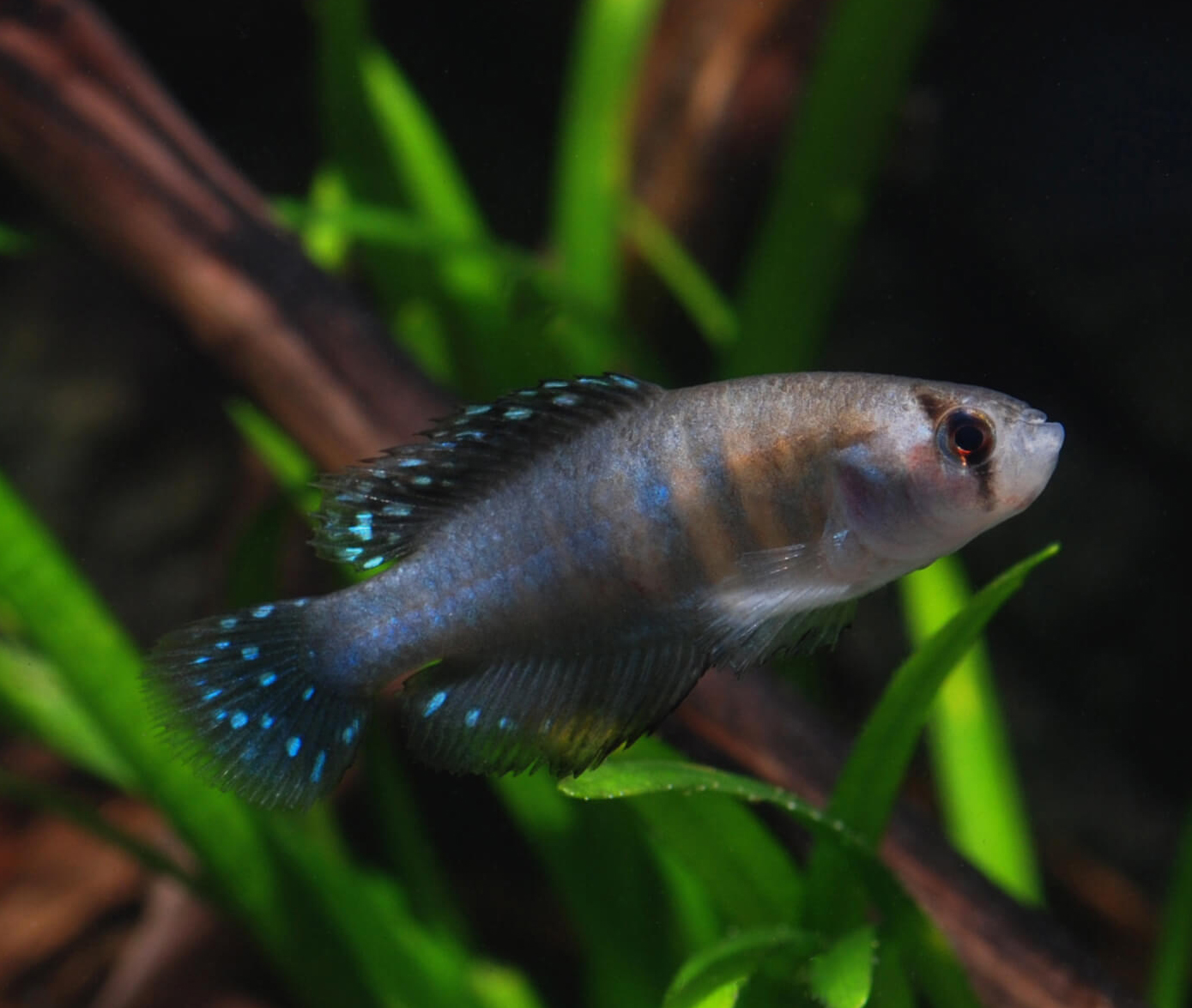
Austrolebias (Cynolebias) cyaneus - blue fanfish: The blue fanfish lives in the wild in the catchment area of the Rio Jacui in Brazil. The Blue Fanfish grows to a length of about 5 cm, the females are usually somewhat smaller.
Recommended water values: GH 5 to 8, KH up to 3, pH 6 to 6.5, temperature 22 to 25 °C
Recommended aquarium size: from 60 cm edge length
Drying time for peat preparation: 2 to 4 months
Recommended group size in the aquarium: pairs or at least 3 animals with a surplus of females.
The genus Leptopanchax
Leptopanchax citrinipinnis - Yellowfin Fanfish: The Yellowfin Fanfish from the Atlantic Rainforest of Brazil lives in nature in temporary pools in the Restinga grasslands. The Yellowfin Fanfish grows up to 5 cm, although the females usually do not grow quite so large.
Recommended water values: GH 5 to 8, KH up to 3, pH 6 to 6.5, temperature 22 to 25 °C
Recommended aquarium size: from 60 cm edge length
Drying time for peat build-up: 2 to 4 months
Recommended group size in the aquarium: pairs or at least 3 animals with excess females.
The genus Nematolebias
Nematolebias (Cynolebias) whitei - Emerald Fanfish, White Fanfish, Rio Pearlfish: The Emerald Fanfish from Brazil is often found in nature in temporary waters in the coastal plain around the mouth of the Rio Sao Joao. These waters even dry up twice a year. There is also an albino form of the emerald fanfish. The Rio Pearlfish reaches a maximum length of up to 8 cm.
Recommended water values: GH 5 to 8, KH up to 3, pH 6.5 to 7, temperature 20 to 23 °C
Recommended aquarium size: from 80 cm edge length
Drying time for peat build-up: 4 months
Recommended group size in the aquarium: pairs (the males are very territorial and aggressive)
The genus Trigonectes
Trigonectes strigabunduns - striped skimmer: The striped skimmer from the catchment area of the Rio Tocantins in Brazil, which is quite easy to keep in the aquarium, grows to an impressive maximum length of up to 12 cm.
Recommended water values: GH 5 to 8, KH up to 3, pH 6.5 to 7.5, temperature 22 to 25 °C
Recommended aquarium size: from 80 cm edge length
Drying time for the peat mixture: 4 months
Recommended group size in the aquarium: pairs or at least 3 animals with excess females.
